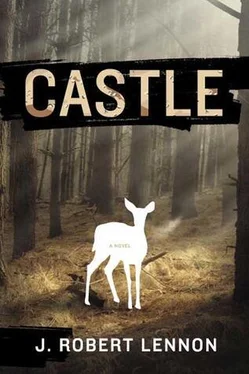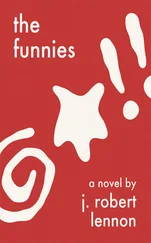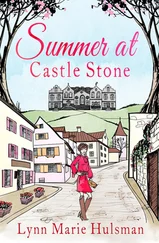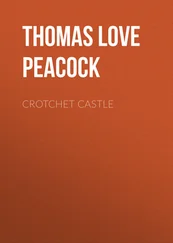She sighed. “I would think so, yes. But as you said, it’s quite clear there on the survey map. And in the text on Schedule A. So it can’t be entirely mistaken.”
I laughed. “Big mistakes do get made, though.”
“I suppose they do, sometimes,” she replied. “I’ll have to consult one of the attorneys.”
“You’ll get back to me about this, then?”
“I certainly will.”
Having done all I could to resolve that small mystery, I resumed work on the interior of the house. The process of cleaning each room and sanding its floor gave me ample opportunity to take stock of the place, and really see what it was I had bought.
I have likely given the impression that the house was entirely empty. This was not, in fact, the case. While steps had obviously been taken by the previous owners to clear out their property, some of their possessions had remained, and I dragged many of them out into the yard, for eventual conveyance to the dump. I would come to a room, remove its contents, clean it to the best of my ability, and get to work with the sander. Thus, a good deal of the former owners’ things passed through my hands.
The front room, into which a visitor arrived upon stepping through the door, was high-ceilinged, and about twenty-five feet square. High, narrow windows covered two sides, with uninspiring views of Lyssa and Phoebus Roads. When I arrived, torn and moth-eaten curtains hung over these windows, and bits of cardboard or plywood covered some broken panes. Two of the windows had been boarded over entirely. A single chair, of a simple wooden design, leaned against an interior wall, as two of its legs were missing. There was a calendar on that same wall from 1964. It was the tear-off kind, mounted on stiff cardboard bearing the name of a metal fabrication business, and the month of June was on top. There was exactly one thing written on it, in a shaky, left-angled hand: RACHEL DOCTOR 2PM, on Monday the eighth. On the other interior wall hung a penciled drawing of a house — or, rather, a kind of castle, made of stone and turreted, with crenellated parapets, cannon ports, and a broad keep with round-arched windows. The drawing, though clearly the work of a child, was very good, the individual stones carefully traced with mortar in between them, the lines and shadows quite accurate and consistent with a fixed direction of light, the perspective lopsided but nevertheless fairly convincing. The face of a mountain loomed up behind it, and a tiny mountain goat was perched on an outcropping, seeming to peer off into the distance. I threw the broken chair and calendar into my trash pile, but kept the drawing, slipping it in among the legal papers pertaining to the house.
Off the main room was a sitting room which faced Phoebus Road and the forest; it took up the southeast corner of the building and was not as large as the main room. Here was an overstuffed, velvet-upholstered sofa, which had been water-damaged and which stank, and so out it went. There was also a book, a storybook for older children that seemed to have been checked out of, but never returned to, a library. The spine was missing, exposing the glue that bound the pages together, and the front cover bore only an embossed illustration: a young man, wearing tattered clothes and an expression of grave concentration, climbing up a flagpole. His hand was extended, his fingers mere inches from his goal, which was a piece of wind-tossed cloth tied to the pole’s apex. This, too, I saved.
The house’s ground floor also contained a smallish study or sewing room, and a large dining room, which was next to the kitchen, in the northwest corner. These rooms were empty, though a crystal chandelier hung in the dining room, just north of center. The space underneath it was bounded by four slight depressions in the pine floor, as if a heavy table had long stood there, and the floor between them bore a haze of scrapes and gouges, evidently made by chairs being pushed toward and away from the table.
I have to admit that I found these markings strangely upsetting. Nothing, of course, could have been more ordinary — the evidence of a family having shared countless meals — yet I found myself enduring a small shiver of unease. Did the family ever imagine, as they sat together around the table, that this room might someday be empty of everything but cobwebs and dust? I tried to conjure in my mind the sounds and smells that once filled the room, but nothing came to me: the image I formed of the family was that of thin, gray figures, silently hunched over a dark mahogany table, their eyes closed, their hands hanging inertly at their sides. And I pictured them covered with white sheets, as if in storage, and the sheets furred with decades of dust.
In any event, I shook off these thoughts and set to work with gusto, obliterating with my sander the markings that gave rise to them. I don’t know what came over me — I am not of a particularly imaginative cast of mind. At any rate, once the boards had been sanded, I felt much better, and I was able to complete my work on the lower floor by the end of the day.
That was Wednesday. Thursday morning, when I arrived at the house from my motel, I found the electrician waiting for me, leaning against his van, looking at a magazine. Some of winter’s chill had returned, and one would have thought it would be unpleasant to stand still. But the electrician seemed content. He was a stocky man of about sixty, and he wore a clean tan jumpsuit, a hunting cap with earflaps, and a pair of fingerless gloves. He held a tall silver thermos in one hand, and sipped directly from the screw top, eschewing the cup, which appeared to be missing.
He barely spared me a glance as I pulled up, and it was only when I had gotten out of my car and approached him directly that he deftly slipped the magazine into a pocket and shook my hand. “Mr. Loesch? Paul Hephner. Call me Heph.”
“Thank you for coming, Heph.”
He tipped his head toward the house. “Bought the place, didya?” he asked.
“That’s right,” I said. I began to move toward the door, to preclude conversation. “Come on in.”
At the threshold, Heph slipped a pair of paper covers over his boots. The boots were impeccably clean, but I appreciated the gesture nonetheless, not yet having sealed the floors. “I’d like you to check the fuse box and the wiring,” I said. “The basement door—” But the electrician was already there, nudging my rock aside with an impatient foot.
“Careful on the stairs,” I called after him, peering down into the darkness. The circle cast by his flashlight bobbed, revealing a dirt floor and crumbling walls.
I stood upon the top step, listening to him move about. There was the scrape of something being dragged, a clank.
“Have you found the fuse box?” I said.
“Yalp,” he shouted. “Don’t worry about me, Mr. Loesch. Just you go about your business.”
“All right, then,” I said.
My work today would be to sand the upstairs floors, so I took a deep breath, lifted the sander, and hauled it up the steps. Each creaked deeply under the weight, but none threatened to break. As poorly maintained as the house had been, it was sturdy, and I felt a renewed confidence in my decision to buy it.
There was little to be cleared away in the bedrooms. A moldering ottoman, and a bureau that had warped and split; a small jewelry box, empty, sitting on a windowsill. In the smallest of the four upstairs rooms, I found another drawing, evidently by the same hand that had sketched the castle I’d found the day before. It was affixed to the wall with a carpet nail, and hung right next to a window. The view through the window was of the entirety of the land I had bought, and the drawing was of that same view. But the artist had altered the landscape, adorning it with fanciful details. In place of the rock that served as the centerpiece of the real landscape, there was a castle — clearly the same one as in the first drawing. Flags flew from the towers, and musical notes hung over the scene, as if some kind of celebration were under way. The sky was dotted with what I thought at first were birds, but upon closer inspection turned out to be friendly dragons, and the trees were heavy with fruit. I removed this drawing from the wall and added it to the sheaf of house documents.
Читать дальше











